Python Classes in Pune – Master Python Programming with ECTI
Unlock your potential with the best Python classes in Pune at Envision Computer Training Institute (ECTI). Our expertly curated program covers everything from Python basics to advanced concepts like Python programming for data science and full-stack development, ensuring a well-rounded learning experience. Whether you're a beginner seeking to learn Python or a professional aiming to upgrade your skills, our Python course in Pune with lifetime job assistance guarantee your success. Learn from industry-expert trainers, gain hands-on experience with real-world projects, and become job-ready with our placement-focused curriculum.
Why Choose Our Python Training in Pune?
•Beginner to Advanced Learning •Hands on Projects •Lifetime Job Assistance •Experienced Trainers

4.9/5
Top Python Course in Pune Review
Hurry Up!
batch is starting soon...
only 5 seats are available for this batch
Advantages of Our Python Training in Pune
- Lifetime placement assistant till you get a job
- Unlimited Placement Calls
- Affordable Python Course Fees with EMI options
- 10+ years industry experienced trainers

10000+ Happy Students.
Best Python Classes in Pune – Get Placed in Top IT Companies
With over 10,000+ successful students, our Python course in Pune has helped professionals get placed in reputed companies like TCS, Capgemini, Deloitte, Alten Inc, and Heaptrace. You could be next!

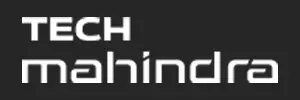
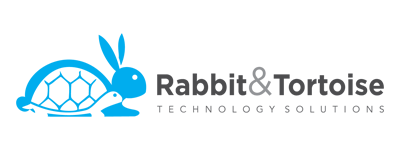
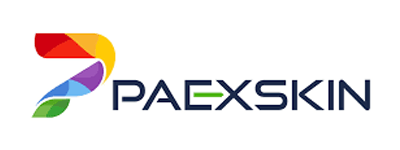

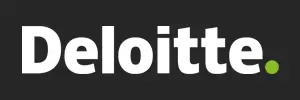

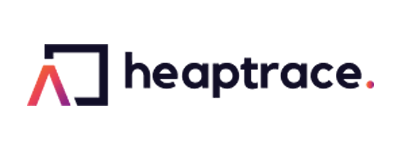
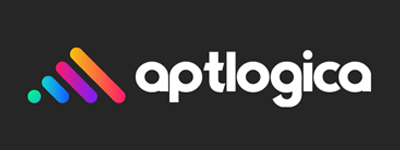



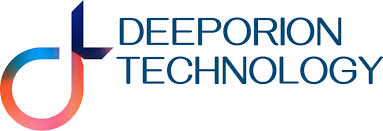




Sahil Sayyad
Consociate Solution Pvt Ltd
Front End Web Developer
January, 2025
Vishwakarma College of Arts, Commerce and Science
M.Sc (Computer Science) - 2023

Sakshi Vijay Malvadkar
Capgemini
Software Developer
December, 2024
Modern Education Society's Wadia College of Engineering Pune
BE - 2024

Piyush Yadav
Future Tech Design Solutions Pvt. Ltd. Gurugram.
Digital Modeler Class A
December, 2024
University of Engineering and Management, Jaipur (Rajasthan)
B. Tech (Mechanical Engineering) -2021

Shubham Sawalkar
Studio Key designs LLP
CAS Modeller
September, 2024
Symbiosis Skill & Professional University
B.Tech.(Automtion ) - 2021
Best Python Classes in Pune – Key Topics Covered
Unlock your potential with the best Python full stack developer course in Pune at Envision Computer Training Institute Pvt. Ltd. (ECTIPL). Designed to equip you with in-demand skills, this program combines Python programming for beginners, advanced concepts, and the latest technologies. Learn from seasoned professionals and gain hands-on experience with frameworks like Django, Flask, and front-end tools such as React.js, Angular, and Bootstrap. Develop dynamic web applications, optimize performance, and master both front-end and back-end technologies, including SQL, NoSQL, and APIs like Google Maps.
With real-world projects, responsive design, and expert mentorship, this course prepares you for exciting career opportunities in the IT industry, ensuring you stand out in the competitive job market.Our Python training in Pune is designed to give you the right skills and knowledge to land high-paying jobs in the IT industry. Take the first step towards becoming a full stack Python developer in Pune with our Python full course and build your career-ready portfolio today!
Key Features of Python Programming Training Course

Comprehensive Certification
Earn a Python Certificate of Completion and share it on professional platforms to enhance your career.

Flexible Learning Options
Access both online Python training in Pune and offline classes, catering to beginners and advanced learners.

Immersive Practical Training
Engage in a 624-hour Python full course with live projects covering data science, web development, and backend integration.

Industry-Expert Trainers
Learn from Python-certified professionals with real-world project experience and guidance for interview preparation.

Placement Support
Benefit from job placement assistance, portfolio building, and guidance on career advancement and salary negotiation.

Affordable and Accessible
Enjoy cost-effective training with EMI options and lifelong access to high-quality learning materials.
Why ECTI?
Lifetime Job Assistance
With our Lifetime placement assistant courses, you can achieve your career goals.

Cost Effective
We know how much money you need to invest in getting technical knowledge. Thus we have made sure the courses we provide are not just the best but also absolutely cost effective.
Industry Experts Lectures
With our Lifetime placement assistant courses, you can achieve your career goals.
Free Interview Training
Interview technique is a major hurdle for students trying to get a job. At Envision, we ensure your development.
Mock Interviews
We also make sure that a fresher isn't a fresher when it comes to his interviews from experts and people actually working in HR at various renowned companies.
Most Updated Syllabus
We are proud to mention that our syllabus is updated every quarter.

Complete Python programming syllabus
The Python Full Stack Development Course is designed for aspiring developers eager to excel in creating robust, scalable, and dynamic web applications. With a comprehensive curriculum covering foundational front-end technologies, advanced Python programming, and backend frameworks like Django, this course prepares you to master end-to-end web development. Build your expertise and secure a career in one of the fastest-growing fields in tech.
Lay the foundation of your full-stack journey with HTML and CSS. These essential technologies allow you to create the structure and design of your web pages.
Key Topics:
- Semantic HTML5 elements and layout design.
- CSS3 for styling, animations, and visual hierarchy.
- Flexbox and Grid for responsive designs.
- SEO-friendly and accessible web development practices.
Learn to design mobile-first web applications using Bootstrap, an essential framework for creating professional-grade websites.
Key Topics:
- Bootstrap’s grid system for layouts.
- Prebuilt components like carousels and modals.
- Creating adaptive forms and buttons.
- Customizing themes with Bootstrap utilities.
JavaScript & jQuery for Python Developers
Learn how to enhance your Python programming skills by mastering JavaScript and jQuery, two powerful tools for creating interactive and dynamic web applications. This module is designed to give you a strong foundation in front-end development, perfectly complementing your Python backend expertise.
Key Topics Covered:
- JavaScript Essentials: Understand the core concepts of JavaScript, including variables, data types, loops, functions, and event handling.
- DOM Manipulation: Learn to dynamically update content, styles, and user interfaces using JavaScript.
- Asynchronous Programming: Explore AJAX and fetch API to enable seamless communication between the front-end and Python-based backend.
- Introduction to jQuery: Simplify JavaScript tasks with jQuery, a powerful library for rapid development.
- Animation & Effects: Create interactive user experiences with smooth animations and engaging effects.
- Event Handling: Implement event-driven programming to manage user interactions efficiently.
- Integration with Python Frameworks: Discover how to integrate JavaScript and jQuery with Django and Flask for robust full-stack development.
By combining JavaScript and jQuery with your Python knowledge, you will gain the skills to build highly interactive, responsive, and dynamic web applications. Whether you are designing single-page applications or enhancing existing websites, this module prepares you for real-world challenges in web development.
ReactJS for Python Developers
Take your web development skills to the next level with ReactJS, a powerful JavaScript library for building fast, interactive, and scalable user interfaces. This module is tailored to complement your Python backend expertise by teaching you how to create dynamic front-end applications seamlessly integrated with frameworks like Django and Flask.
Key Topics Covered:
- ReactJS Fundamentals: Understand React’s core concepts, including components, props, and state, to build modular and reusable UI elements.
- Virtual DOM: Explore how React optimizes performance using its Virtual DOM for efficient rendering.
- Component Lifecycle: Learn about React’s component lifecycle methods to manage updates and state changes effectively.
- React Hooks: Master modern React development techniques using hooks like
useStateanduseEffectfor functional programming. - Routing with React Router: Build single-page applications (SPAs) with smooth navigation and dynamic content loading.
- State Management with Redux: Implement robust state management solutions using Redux for scalable React applications.
- Integration with Python Backends: Learn how to connect React front-end applications with Python-based frameworks like Django and Flask for full-stack development.
- Deployment Best Practices: Get hands-on experience deploying React applications on platforms such as Heroku or AWS.
By mastering ReactJS, you’ll gain the skills to develop high-performance, modern web applications that work seamlessly with Python-powered backends. Whether building dashboards, e-commerce platforms, or data-driven applications, this module equips you with industry-relevant expertise.
Core & Advance Python Programming
Build a solid foundation in Python and advance your skills for real-world applications like web development, automation, and data analysis. This module combines essential concepts with advanced techniques to make you industry-ready.
Core Python Topics:
- Python basics: installation, syntax, and data types.
- Control flow: loops, conditions, and exception handling.
- Functions, modules, and file handling for efficient coding.
Advanced Python Topics:
- OOP: classes, inheritance, and polymorphism.
- Advanced tools: decorators, generators, and threading.
- Database integration with MySQL/SQLite and web scraping with BeautifulSoup.
- Introduction to AI, machine learning, and Python frameworks like Django and Flask.
Mastering Core and Advance Python equips you to excel in software development, data analysis, and full-stack web development.
Key Topics:
- Python basics, functions, and object-oriented programming.
- Handling files, exceptions, and libraries.
- Data structures like lists, dictionaries, and sets.
- Python’s applications in web development and AI.
Master backend development with Django classes in Pune and Flask, Python’s popular web frameworks. Build secure, scalable, and efficient web applications.
Key Topics:
- Setting up Django and Flask environments.
- Building models, views, and controllers (MVC).
- Implementing REST APIs for seamless data exchange.
- Security, authentication, and deployment practices.
Learn SQL to manage databases effectively and integrate them with your web applications. This module focuses on relational database management and optimization.
Key Topics:
- Creating, reading, updating, and deleting data (CRUD operations).
- Designing relational schemas and optimizing queries.
- Using Python libraries to connect and manage databases.
- Database security and backup strategies.
Certified Python Full Stack Development Course in Pune
Earn a Professional Certificate in Python Full Stack Development at Envision Computer Training Institute Pvt. Ltd. (ECTIPL), the leading provider of Python training in Pune. Designed for beginners and professionals, this program covers core and advanced topics like Python programming, Django, Flask, ReactJS, HTML, and CSS. With hands-on projects and real-world application experience, this Python classes in Pune with placement ensures you master in-demand skills, preparing you for lucrative careers as a full-stack developement career Join the Python classes in Pune today with Envision.

Python Course in Pune with Placement Assistance
Enroll in our Python course in Pune and unlock career opportunities with guaranteed placements in top IT firms offering salaries ranging from 2.5 LPA to 5.0 LPA. Our comprehensive placement process ensures success through individual grooming, mock tests, and mock interviews, tailored to enhance your aptitude, technical, and HR skills. With personalized profile matching, dedicated student coordinators, and expert salary negotiation strategies, we help you land your dream job. Build an impressive portfolio with guidance on resume and LinkedIn optimization while mastering essential soft skills and interview techniques. With over 400 recruitment partners and regular placement webinars, our Python training in Pune is your gateway to a rewarding career in the IT industry.
Join the Best Python Course in Pune Today!
Don’t miss out on the opportunity to learn from the best! Our new Python classes in Pune batch is starting soon, with only 5 seats available. Take the first step toward a successful career in Python programming today!

Job-Ready Skills
Master essential Python programming for beginners to advanced levels, including web and application development using cutting-edge technologies.

Hands-On Projects
Build a strong portfolio with applied learning through live projects on frameworks like Django and Flask, using real-world data.

Recognized Credentials
Earn an industry-recognized certificate showcasing your expertise to employers globally.

Comprehensive Training
Gain expertise in cloud computing, HTML, CSS, Git, and Python programming for data science, along with DevOps fundamentals.

Placement Assistance
Leverage career support, interview prep, and direct employer connections to kickstart your career.

Flexible Learning Options
Choose from online Python training in Pune or in-person classes for tailored learning experiences.
Expert Python Trainers in Pune: Industry Professionals with Real-Time Experience
At Envision, our Python course trainers are seasoned professionals with over 5 years of industry experience. They bring dynamic, real-world expertise into every session, using real-life examples to ensure students understand both theoretical concepts and practical applications.
Our trainers hold professional certifications and regularly participate in workshops to stay updated on the latest technologies. They foster an interactive learning environment where students can clarify doubts and are thoroughly prepared for interviews, ensuring a comprehensive and industry-relevant Python learning experience Join the Python classes in Pune by Envision.

Our students words speaks for us
FAQ's
Is Python good for full-stack development?
The essential skill set for Python Full Stack developers includes proficiency in Core Python, Advanced Python, Django, Flask, front-end development languages (HTML, CSS, JavaScript), and database administration (SQL). They should also be skilled in Entity Framework, RESTful web services, version control systems (Git), and possess strong problem-solving abilities, effective communication skills, and a dedication to continuous learning join the ECTI’s python classes in Pune today.
What skills required for Python Full Stack Developer
Python Full Stack developers need to be proficient in Core Python, Advanced Python, Django, Flask, front-end development (HTML, CSS, JavaScript), and SQL for database management. Essential skills also include knowledge of Entity Framework, RESTful web services, version control with Git, strong problem-solving abilities, effective communication, and a commitment to ongoing learning. Join the ECTI’s python classes in Pune.
What is the salary of a Python developer in India?
In India, the salary for Fullstack Python Developers ranges from ₹2.1 Lakhs to ₹17 Lakhs per year, depending on experience, which can range from less than 1 year to 7 years. The average annual salary is ₹5.5 Lakhs, based on data from 1,000 recent salary reports.
We have 3 python classes in Pune to learn basic to advance Python courses.
Is Python enough to get a job?
Certainly! Securing a position in the Python domain as a fresher is relatively straightforward. Python offers numerous career opportunities, providing global recognition, rewarding careers, and significant job satisfaction for aspiring professionals. However, the exact level of knowledge required for a fresher to start a career as a Python developer or programmer is not clearly defined.
Enroll in Our Python Course in Pune Today & Secure Your Future in Tech!
Which job is best in Python?
Junior Python Developer
This entry-level role is where a software engineer begins their career. In this position, the engineer is responsible for writing, analyzing, testing, and debugging code. They typically work as part of a team and report to leaders and mentors for guidance. As this is their first job, it is crucial for them to familiarize themselves with industry practices and standards. Focusing on skill development is essential for improving proficiency, which can facilitate career advancement within their current company or enable a transition to a more desirable employer. This role represents a promising career opportunity in Python.
Senior Python Developer
A senior developer generally takes full ownership of projects, reporting to executive officers and managers, and contributing to coding tasks. They also mentor new developers within the company or on specific projects. This role is widely regarded as the standard position for a developer.
Python Architect
A Python architect designs and constructs the structure of an application, categorizing various logic layers to distribute responsibilities among team members. They select and integrate the most suitable technologies for the software being developed, ensuring seamless compatibility. These job listings often come from leading companies seeking specialized Python programmers proficient in enhancing and optimizing existing products. Field-specific job postings may require particular skill sets.
Python Web Developer
A Python web developer usually focuses on backend development, deploying and maintaining server-side code. Understanding cloud computing basics is beneficial due to the industry’s rapid shift towards cloud-based systems.
If you are interested in web applications, you might explore opportunities as a full-stack Python developer. In this role, you could lead web development teams, design new websites, and enhance existing ones. Full-stack developers may either create web-based applications for a single company or offer consultancy services to multiple businesses. In a consultant capacity, they provide guidance and execute tasks leveraging their diverse web programming skills.
Essential skills for a full-stack developer include:
Comprehensive knowledge of front-end framework design.
Proficiency in testing.
Familiarity with microservices and their integration into applications.
Proficiency with various tools like Docker, Ansible, and AWS to enhance efficiency and facilitate work with different web technologies.
A deep understanding of libraries and the ability to create APIs within the code.
Freelancing
Numerous online platforms like LinkedIn have simplified the freelancing process and accelerated client networking. Freelancing can also serve as a part-time Python career opportunity, providing valuable experience to enhance one’s resume. However, freelancing comes with challenges such as lower initial pay, high competition, inconsistent workload, and demanding clients. Freelance work for Python developers typically falls into two categories: coding jobs and feature development. These jobs are often remote, allowing you to freelance as a Python web developer or app developer.
Consulting Developers
Experienced individuals in the industry often secure roles as consulting developers. These positions are typically advertised by companies with tight deadlines, focusing on launching or improving a product or feature. Such jobs usually require on-site work, with freelancers integrated into the project team. Contracts typically conclude upon project completion.
Which is the best Python training in Pune?
Envision Computer Training Institute Private Limited Pune ECTI offers the best Python classes in Pune, covering all essential concepts with real-world projects and placement support.
We also have 3 Python classes in Pune at Bibwewadi, FC road & Hadapsar Location.
Related courses

Full stack development course

Latest Job Opening

New Course

Hello world!
